
Gouache is an often overlooked painting medium that blends the worlds of translucent watercolor painting and opaque painting mediums such as acrylics and oils. Most similar to watercolor, it can be thinned with water to produce translucent effects or applied without much thinning to produce opaque results.
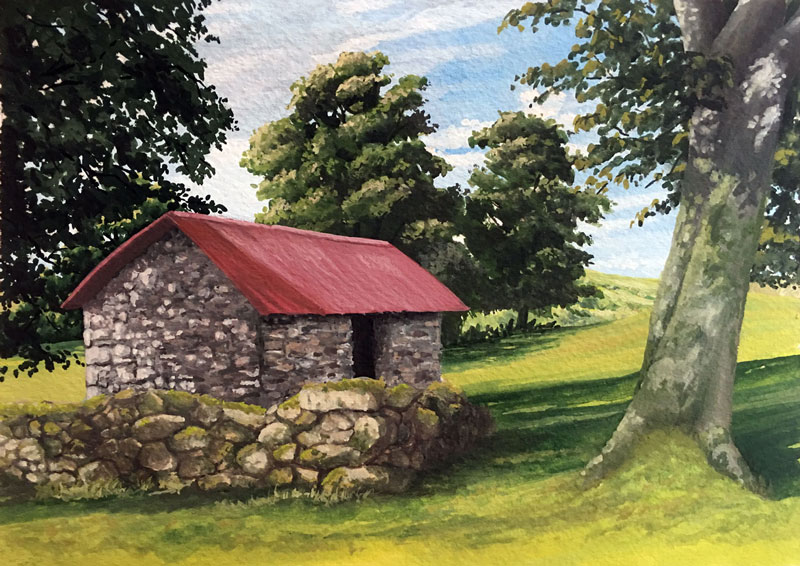
Unlike acrylics, gouache can be reactivated on the surface with a bit of water. This allows the artist to revisit areas after they have dried and smooth transitions of value and color with the brush.
As mentioned before, gouache is extremely versatile. It can be reactivated with water, used as watercolor, or applied opaquely like acrylics. This provides the artist with a broader range of techniques that can be used.
Typically, goauche paintings are small and the materials required are compact. Generally, all you need is gouache paint, a few small watercolor brushes, water, and a surface like watercolor paper. This makes goauche a perfect medium for painting on-site ("plein air" painting). The paint dries very quickly and doesn't create a mess during the process. Although goauche paintings can be very detailed, they can also be loose and developed quickly.
Goauche also works well with other mediums. Goauche is often used in conjunction with traditional watercolors. It can be used over markers or a base for colored pencil, pastel, and pen and ink.
Goauche is versatile, but it does come with a few disadvantages. Goauche is mostly applied to surfaces that will "hold" the applications. In most cases, these surfaces are papers or gessoed boards. Canvas surfaces do not work well with gouache, which are better suited for acrylic or oil applications.
Goauche is not permanent. As mentioned before, gouache applications can be reactivated with water. Acrylic and oil paintings, when dry, are water-proof. This means that your goauche painting will not be water resistant and should be protected behind a glass frame.
Color matching can be difficult with goauche. Gouache changes value as it dries. Lighter values typically dry a bit darker, while darker values tend to dry a bit lighter. This makes matching colors from observation or mixing colors to match a color already within the painting difficult.
In this example, we are using gouache as an opaque medium which allows us to develop the background first, before moving on to the middle ground and then lastly, the foreground. But before applying any applications of gouache, we'll need to start with a light graphite sketch of the contours (outlines).
Recommended Materials for This Tutorial
(Some of the following links are affiliate links which means we earn a small commission if you purchase at no additional cost to you.)
With the contours of the scene in place, the colors of the sky are developed and applied. A mixture of primary blue and Titanium White is used for the majority of the background. Variations in the mixture are developed in order to create the illusion of distant clouds. A few bits of gray are included for variety and additional depth.
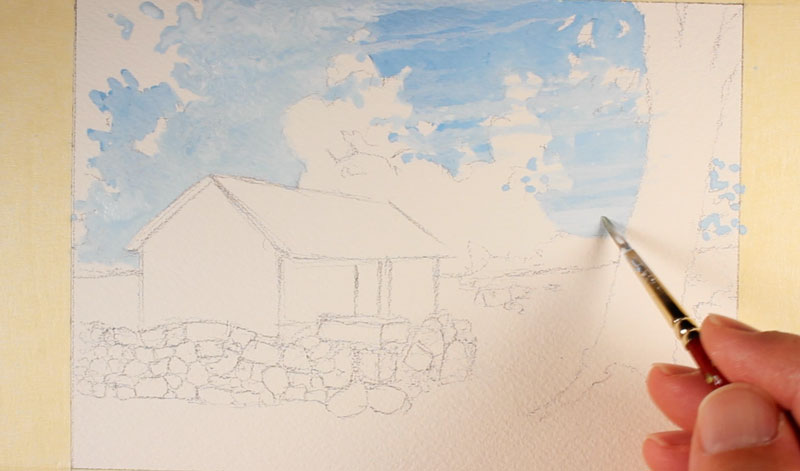
A distant hillside is developed by layering a variety of yellow-greens, greens, and even Burnt Sienna over an base of yellow-green. These colors are then subsequently blended by going over the surface with a brush lightly loaded with water. A closer hill of Yellow-Ochre and green is then overlapped.
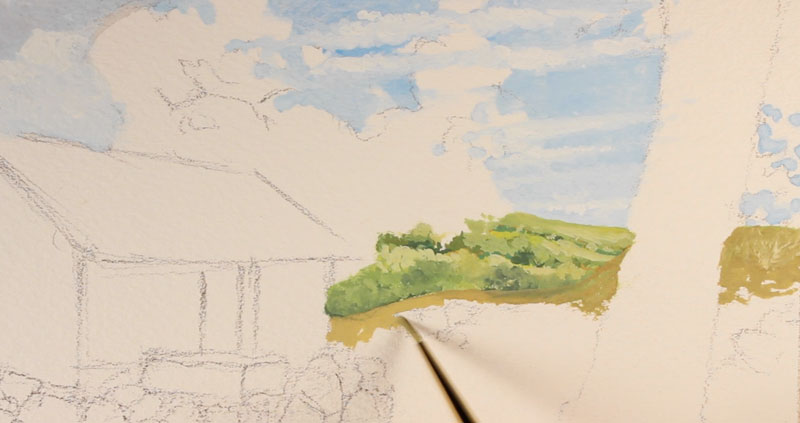
A grouping of trees is added along the middle hillside. A dark green is used to establish the shape allowing breaks to occur showing the sky behind it. The shadowed areas are developed with an even darker green while highlights are established with various versions of lighter yellow-greens. Using a brush slightly dampened with water, these applications are gently blended, leading to a painterly appearance.
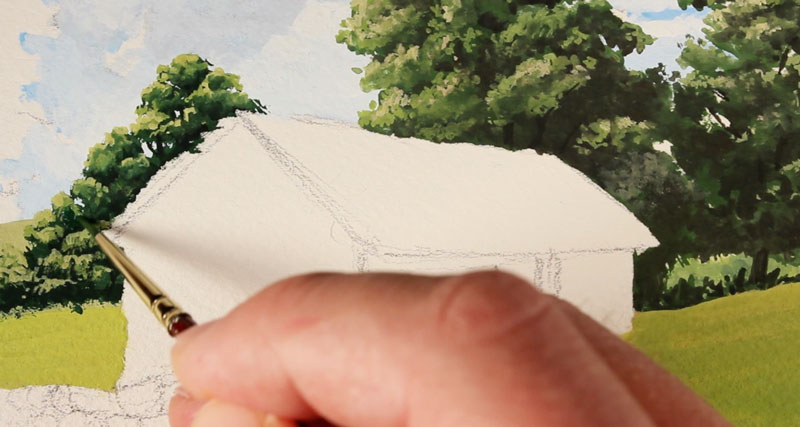
After placing a few shadows under the trees with a darker green, the underside of the canopy of trees closest to the viewer is developed. A dark green is used to establish the shape before adding bits of slightly lighter versions for variety and depth.
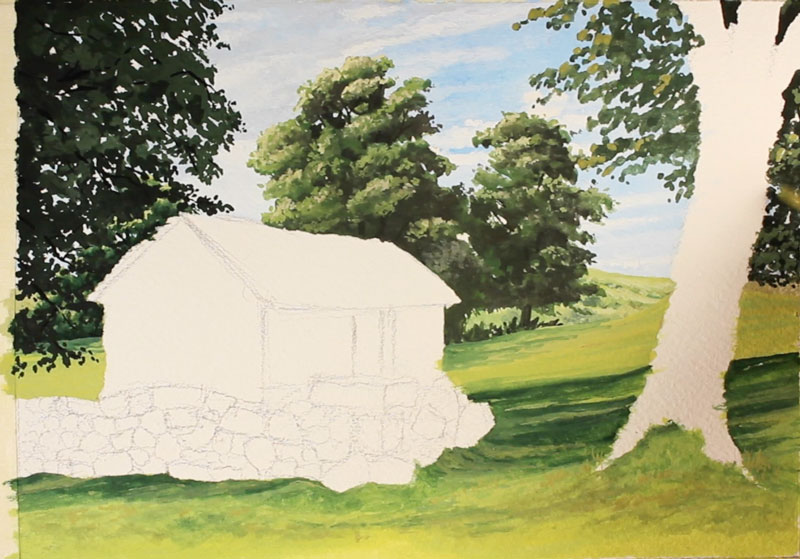
The stone structure begins with a base application of gray before layering various versions of warm and cool grays over the top. Lighter and darker shapes are developed before blending with a touch of water. Bits of strong highlight, indicated by lighter grays, are added to the side of the building indicating areas where light is penetrating the canopy of leaves.
The shape of the roof is addressed with a mixture of Burnt Sienna and Primary Red before pushing the value range with lighter and darker versions. Highlights exist mainly on the right side of the roof, while shadows can be found under the overhang.
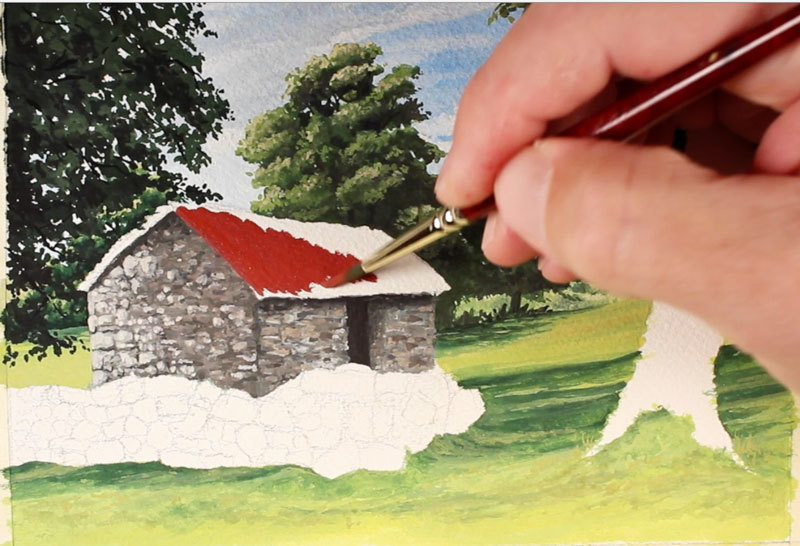
A stone wall exists in front of the stone building. The entire shape is addressed with a mixture of Yellow-Ochre, Titanium White, and a touch of Burnt Sienna. The shape of each stone is defined with a darker gray and gently blended with a hint of water.
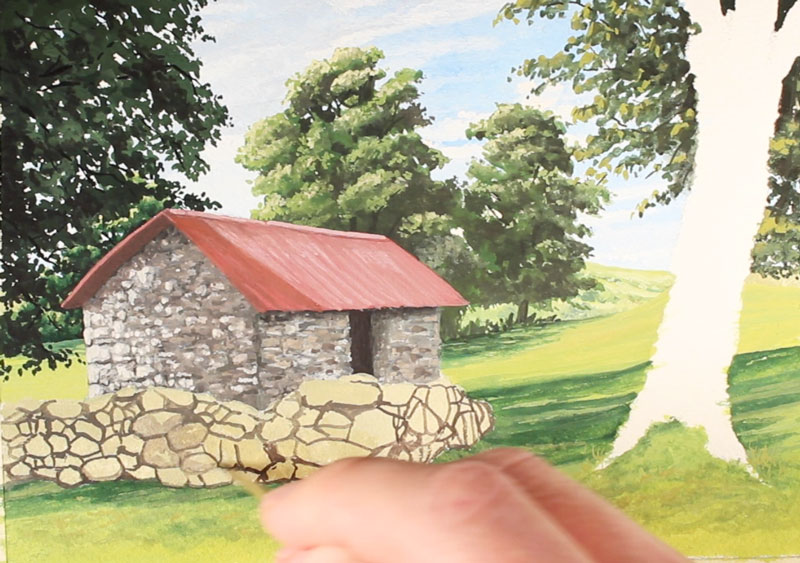
The form of each stone is developed by working the values darker and then lighter. Dark green is glazed over in areas to produce the foundation for the moss. Progressively lighter and warmer versions of the green are applied over the top to develop a convincing illusion of moss. The value range is then pushed further by darkening the shadows in areas and adding strong highlights where light is making its way onto the wall.
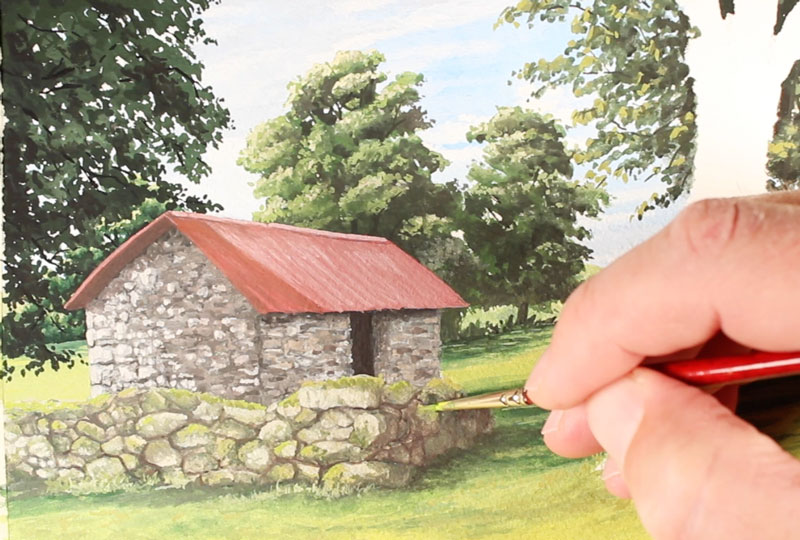
With most of the elements of the scene complete, we can focus on the tree in the extreme foreground. A warm gray is applied as a base application before adding bits of darker versions, in the shadows near the top, and lighter versions on the lower right side. A bit of water is layered over the top to blend the transitions of values. This process of adding lighter and darker values continues until the illusion of the form of the tree is complete.
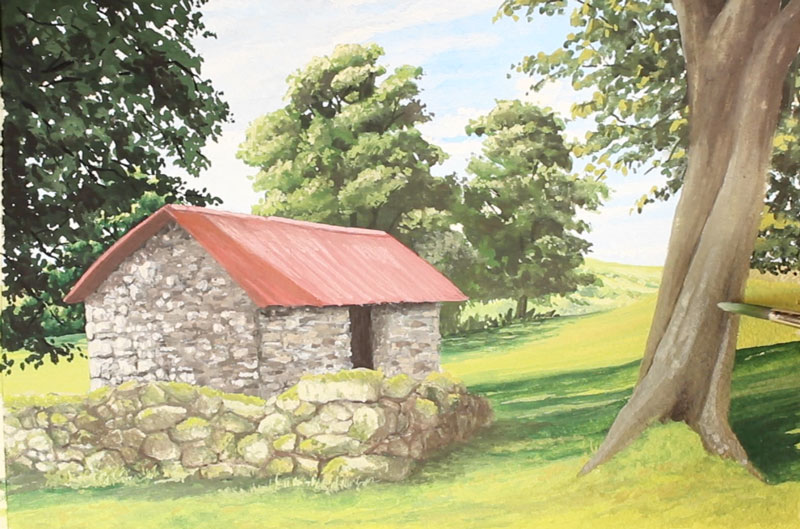
Strong highlights are added to the upper portion of the tree to indicate light making its way through the leaves. Shadows in this area are strengthened as well. A bit of moss is added to the base of the tree using the same progression of colors used on the wall.
A few leaves are added to the top of the tree overlapping the trunk, completing the image.

Like many forms of art, painting in great detail with gouache requires a bit of patience and practice. It is a unique medium that has its benefits and drawbacks, but it is one is which every artist should experience at some point.